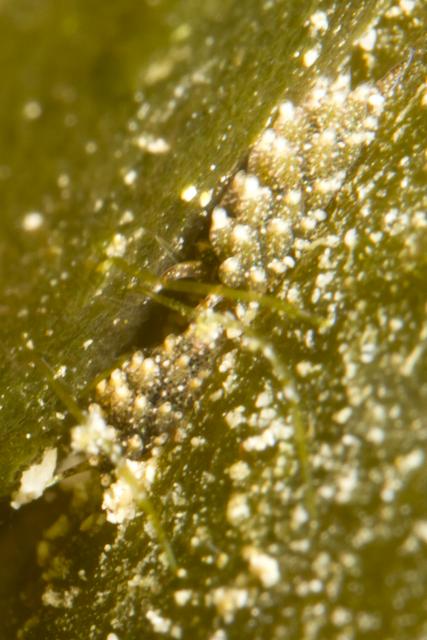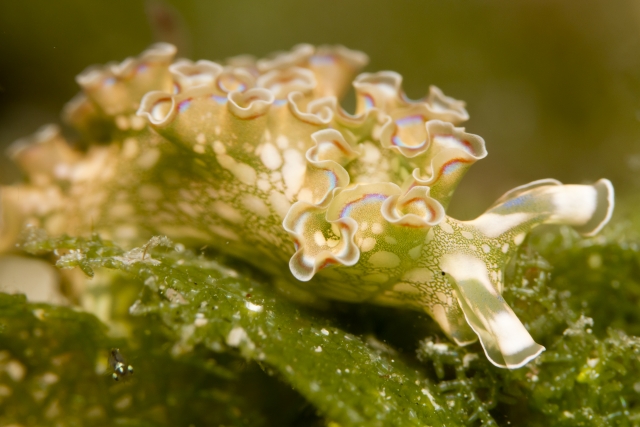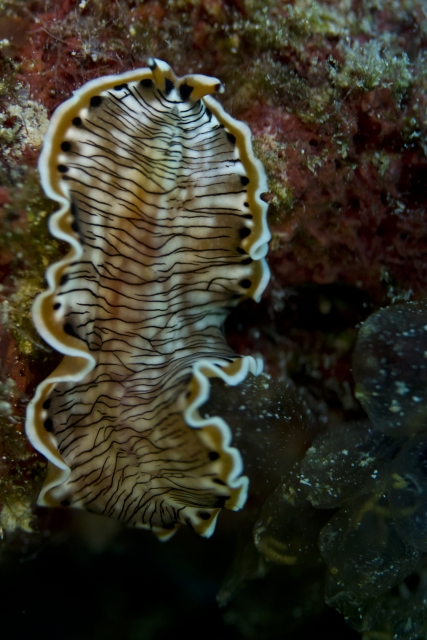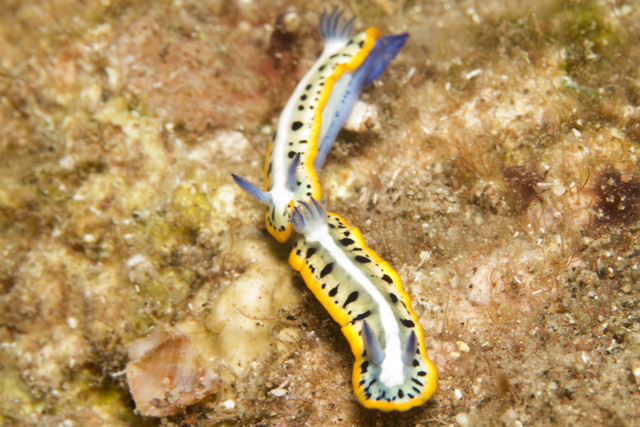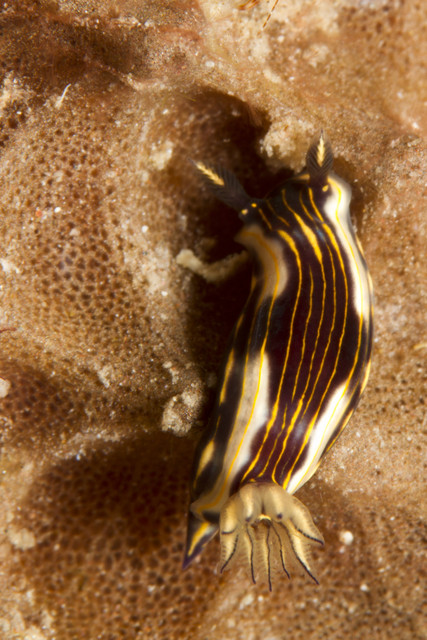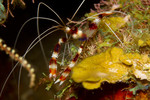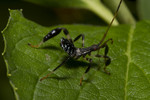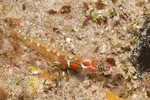nudibranch
Turks and Caicos Explorer 2015: Nudibranchs
ktuli — Mon, 12/21/2015 - 18:11
What would a dive trip be without at least a couple nudibranch shots. Sadly, we didn't get a ton of nudis this trip, but we did get some.
This first of the week came in the form of two insanely tiny nudibranchs that were hidden at the base of what was either a small two-leafed plant or algae. I honestly don't even know how our dive guide, Andi, found them, but he made a point to show them to me since he knew I wanted to find some nudibranchs. Because of their location and the fact that they were hiding between those leaves, the photographs were very difficult to get, but I managed to get a couple that I could at least identify that they were indeed nudibranchs... (honestly, in the water, it was pretty hard to even tell what I was looking at!). I believe these are Ercolania coerulea, but because they are so tiny (probably about 1/4"), my ID may be off.
Technical Data: Canon EOS 7D, Canon EF 100mm f/2.8L Macro IS USM, 1/200th sec at f/16. Image Stabilization on. ISO 400. Ikelite Housing and Port and Ikelite 161 Strobe in TTL Mode. Raw conversion in Photoshop CS5.
The next species of nudibranchs I believe are Berolina Aglaja (Chelidonura berolina). We've seen these little guys before and they are indeed tiny - also in the 1/4" range. They are always found out on the open sand, and from any kind of distance, they look just like black spots on the sand. It isn't until you get close that you notice some shape to them and that they are moving... The last one here, I'm not 100% is the same species, but I'm not sure what else it might be, so...
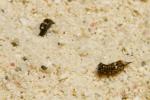 |
 |
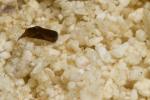 |
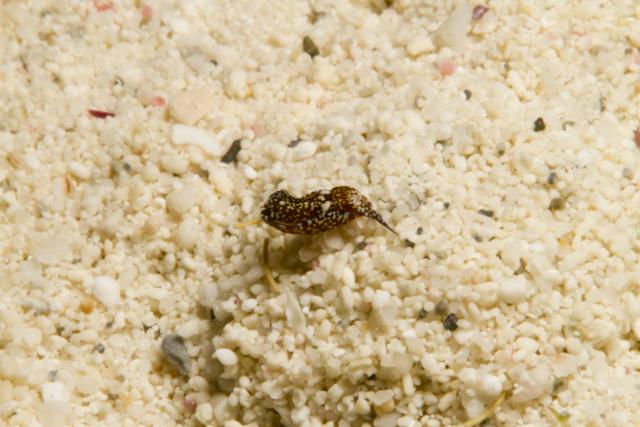 |
||
Then we saw a Trapania dalva - another small (about 1/2" this time) nudibranch we've seen on multiple trips in the past.
Technical Data: Canon EOS 7D, Canon EF 100mm f/2.8L Macro IS USM, 1/200th sec at f/16. Image Stabilization on. ISO 400. Ikelite Housing and Port and Ikelite 161 Strobe in TTL Mode. Raw conversion and cropped in Photoshop CS5.
Finally, on our last night dive, Anya found a sponge with about 8 or 10 (I should have made a point to count exactly how many there were) Longhorn Nudibranchs (Austraeolis catina). These guys are a bit bigger at about 1" in length. I spent about five minutes taking photos of these guys (though I should have taken a bit longer because some of the shots could have been better).
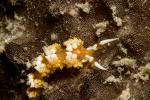 |
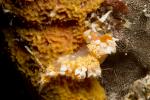 |
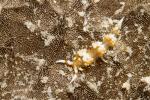 |
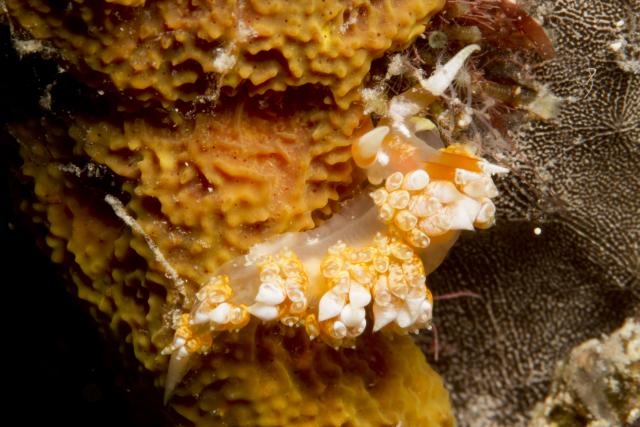 |
||
I'm still really looking forward to another Indo-Pacific dive trip so that we can see many more species of nudibranchs, and during the day so I can hopefully get some true gems of photos to come back with. Till now, any nudibranchs we get to see in Caribbean waters are always a treat because of their general rarity.
- Bill
Aqua Cat: Bloodworms are Photobombing Jerks!
ktuli — Tue, 12/09/2014 - 10:10
So we've talked about feeding bloodworms to reef critters on multiple occasions, and I've briefly touched on how annoying they can be... but today I will show just what photobombing jerks they really are...
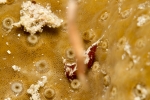 |
 |
 |
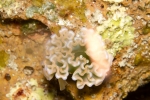 |
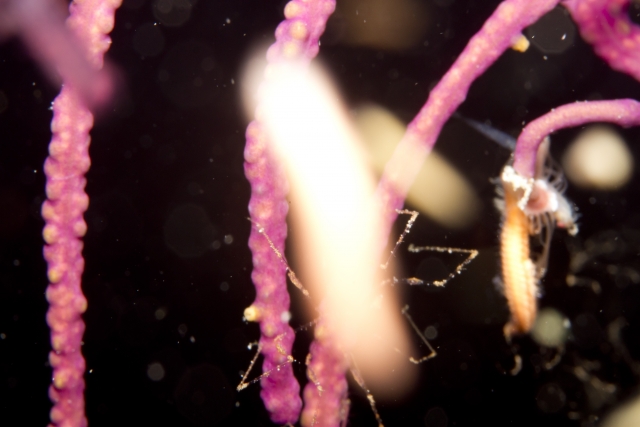 |
|||
The night dives in the Bahamas were especially bad with bloodworms, and this is just a small sampling of the photos ruined by these prolific little annoyances (most of the rest just got deleted).
- Bill
Aqua Cat: Trapania dalva
ktuli — Mon, 11/17/2014 - 15:30
Ok - as promise, a new species of nudibranch to add to my list... Trapania dalva. There are pretty small nudibranchs only ranging in size up to about 10-12 mm (less than a half inch). Their white rhinophores and gills give them the appearance of detritus on the sponges that they tend to be found on.
 |
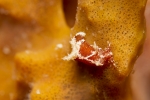 |
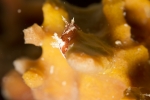 |
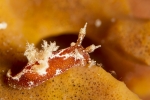 |
 |
|||
Technical Data: Canon EOS 7D, Canon EF 100mm f/2.8L Macro IS USM, 1/200th sec at f/8. Image Stabilization on. ISO 400. Ikelite Housing and Port and Ikelite 161 Strobe in TTL Mode. Raw conversion and cropped in Photoshop CS5.
Thanks for stopping by.
- Bill
Aqua Cat: Lettuce Sea Slug
ktuli — Wed, 11/12/2014 - 20:14
Ok - going to jump ahead because Anya requested I post this one for her...
The always beautiful Lettuce Sea Slug (Elysia crispata).
Technical Data: Canon EOS 7D, Canon EF 100mm f/2.8L Macro IS USM, 1/200th sec at f/8. Image Stabilization on. ISO 400. Ikelite Housing and Port and Ikelite 161 Strobe in TTL Mode. Raw conversion in Photoshop CS5.
I should point out that that tiny black dot under its rhinophore is its eye... now you know, and knowing is half the battle! :)
Though - to be honest, we saw many more (and more beautiful) lettuce sea slugs on our Caribbean Explorer trip (check those posts out here).
- Bill
Aqua Cat: Lined Flatworm
ktuli — Fri, 10/31/2014 - 18:25
While not technically a nudibranch, Flatworms are still a fun find!
Technical Data: Canon EOS 7D, Canon EF 100mm f/2.8L Macro IS USM, 1/120th sec at f/4.5. ISO 1250. Ikelite Housing and Port with dual Ikelite 161 Strobes. Raw conversion in Adobe Camera Raw.
This is apparently a juvenile Lined Flatworm (Pseudoceros crozieri) - I was confused on the identification until a bit of research turned up that the juveniles of this species have that orange border that will fade as they grow into an adult (and that tidbit of information is lodged in my brain forever now!).
- Bill
Aqua Cat: Red-Tipped Sea Goddess
ktuli — Mon, 10/27/2014 - 20:12
WOOOOO!!!!!
Ok - so we're back from our scuba diving trip! I've got tons (I haven't even counted to find out an exact number) of photos to process. I'm going to try doing them in order that they were taken, but that may or may not hold up. And I have no idea how long it will take me to get through them all either.
Our first dive ended with a wonderful surprise in the form of three Red-Tipped Sea Goddess nudibranchs sitting on a sponge in the space of about 2 square inches. Unfortunately, since it had been two years since I'd done underwater photography, I was extremely rusty and was fighting with the strobes to try and get a good exposure. I did manage to bring back a few, but I'm not thrilled with the results... hopefully future ones are better.
Technical Data: Canon EOS 7D, Canon EF 100mm f/2.8L Macro IS USM, 1/120th sec at f/5. ISO 800. Ikelite Housing and Port with dual Ikelite 161 Strobes in video light mode (no flash). Raw conversion in Adobe Camera Raw.
For whatever reason, the dual strobes were giving me fits, so I resorted to just using the video lights and shooting with a higher ISO. The result ended up with a bit of motion blur from the slower shutter speed and limited depth of field from the fairly wide open aperture. Unfortunately, since we'd found these nudibranchs so easily, I incorrectly assumed I'd have plenty of opportunities to get other shots of these and other nudibranchs - as it turned out, nudis ended up being fairly difficult to find all week long.
Stay tuned for more as I process other photos.
- Bill
Nudibranch Assortment
ktuli — Mon, 01/14/2013 - 18:41
What would a retrospective of my blog be without an assortment of one of my favorite underwater critters... nudibranchs. These shots are from Wakatobi, Turks and Caicos, and our trip to Saba/St. Maarten/St. Kitts.
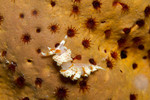 |
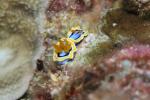 |
 |
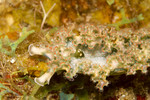 |
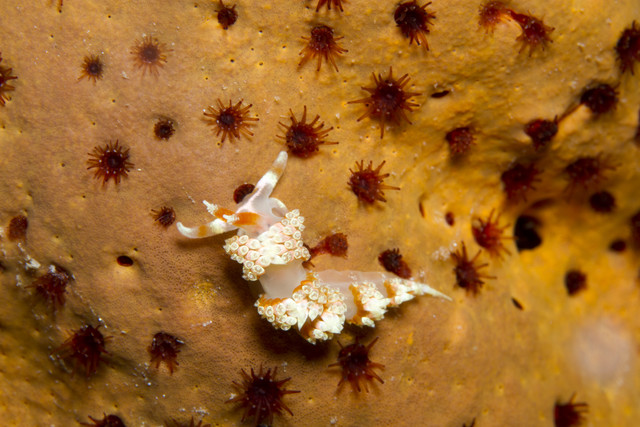 |
|||
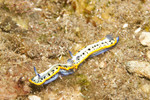 |
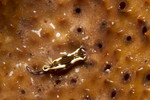 |
 |
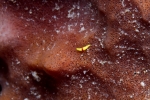 |
OK - I have to admit, I'm not even sure if that last one is actually a nudibranch. It was absolutely tiny, and I could not magnify it any larger. It sure moved like a nudi, and those bright colors make me think it might be one, but I can't find anything in any of my ID books that looks similar. But until I'm proven differently, I'll tell myself it is a new species of nudibranch that hasn't been identified yet. Perhaps I should name it... ;)
- Bill
Turks and Caicos Explorer: Nudibranchs
ktuli — Wed, 12/05/2012 - 19:39
We didn't get to see many nudibranchs on this trip, but here are a couple shots of the two species we did see...
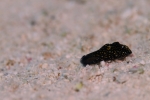 |
 |
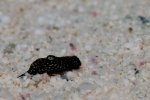 |
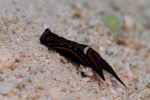 |
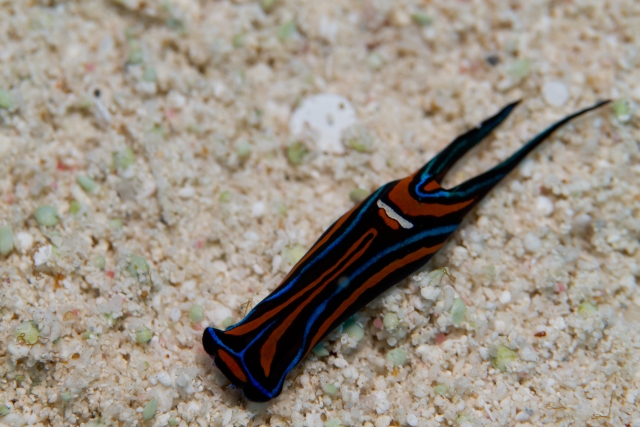 |
|||
There's a trip to Wakatobi planned for Feb 2014, so I'm looking forward to that for my nudibranch fix.
- Bill
Caribbean Explorer: More Purple-Crowned Sea Goddess Nudis
ktuli — Thu, 12/08/2011 - 20:38
I've been lazy recently - both with taking photos as well as posting photos. So, here's at least a new post here.
Technical Data: Canon EOS 7D, Canon EF 100mm f/2.8L Macro IS USM, 1/120th sec at f/16. Image Stabilization on. ISO 100. Ikelite Housing and Port with Ikelite 161 Strobe in TTL Mode. Raw conversion in Photoshop CS5.
- Bill
Caribbean Explorer: Gold-Lined Sea Goddess
ktuli — Sun, 11/27/2011 - 15:40
We didn't get to see as many different species of nudibranchs as we did in Wakatobi, so this is the last species I get to share from this most recent trip.
This is a Gold-Lined Sea Goddess (Hypselodoris ruthae). They are a very small nudibranch, only growing to about half an inch in size, and were only visible at night (yeah - when the sharks were bumping into us).
They aren't the flashiest of nudibranchs, but their small size certainly made them a fun one to find on the dives.
Technical Data: Canon EOS 7D, Canon EF 100mm f/2.8L Macro IS USM, 1/120th sec at f/16. Image Stabilization on. ISO 200. Ikelite Housing and Port with Ikelite 161 Strobe in TTL Mode. Raw conversion and cropped in Photoshop CS5.
If you happened to have missed them, go check out the Purple-Crowned Sea Goddess, Lettuce Sea Slug (and more), and Long-Horn Nudibranch.
- Bill

